26 March, 2000
Ice Cave and Hike to Loudwater Cove; Animal tracks in snow
Question 36: Are there any volcanoes in Antarctica?
Perfect timing! It is our half day off and there isn't a cloud in the sky.
About half the people on the station are taking a boat trip over to Norsel
Point to walk through the ice cave and hike. The ice cave is a remnant of the
retreating glacial ice that still covers almost all of Anvers Island. It is
around 200 meters from the edge of the glacier now and is sheltered from much
contact with sun by the tall rock hills next to it.
The fresh snow is still clean and white on the ground. It is easy to avoid
fur seals today because you can see their tracks before you run into them. I
am surprised at how much of the area has already been traversed by seals!
Snow was still actively falling last night. They have been very busy going
everywhere. There are a few up on rocky hills sunning themselves that are at
least 100 meters from the nearest water.
Other tracks are visible too. There are little skua footprints running
around in delicate line patterns. Some of the tracks tell you what went on.
Some are joined by other skuas, some got bombed and harassed from above,
several were fighting over food, and at the end of each sequence, a skua took
off.
The ice cave is in such a cold, dry environment that there is very little
melting. Originally it was created by a stream of meltwater coming through
the glacier. Now that the glacier isn't connected to it anymore, the walls
and floor are smooth and dry. The glacial ice is so dense and clear I can see
several feet into the surface. It looks as if it were made out of plastic.
There is one icicle forming like a cave feature. Below where the "stalactite"
hangs down is the start of a mound of ice, a "stalagmite."
I hiked past the ice cave along a valley to one of the largest freshwater
lakes in the area. The lake is fed by the glacier which also blocks it from
running into the ocean. At the base of the point is the face of the glacier.
Rock hills covered with glacial rubble rise in front of it. The tallest are
around 110 ft.high. Antarctic and Arctic terns hover overhead and call to
each other.
After reaching the glacier, I climbed the "peaks" for a good view of
Loudwater Cove on the other side of the point. The view was much better than
I expected! I could see down the peninsula to the south, the spread of the
ice field covering Anvers Island, Palmer Station, and the Joubin Islands 15
miles out toward the open ocean. It is truly a breathtaking place.
Our boat had no problems leaving the point, but the other boatload of people
was blocked from reaching their Zodiac by a large fur seal that didn't want to
give up his place on the rocks.
Answer 35: "Spy hopping" is the behavior used by the orca or killer
whale to find penguins and seals on ice floes and on the shore. They "stand"
vertically near the surface and raise their heads up out of the water to spot
their prey. I have also seen Leopard seals do this.
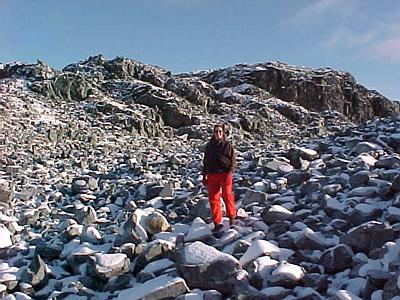
Rocky ground of Norsel Point.

Prints of a skua taking off.
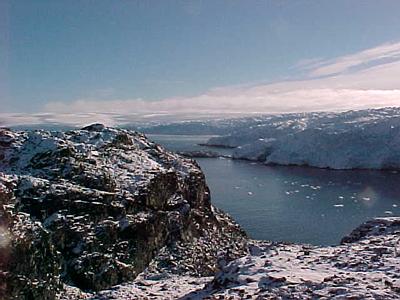
View of glacier down Loudwater Cove.
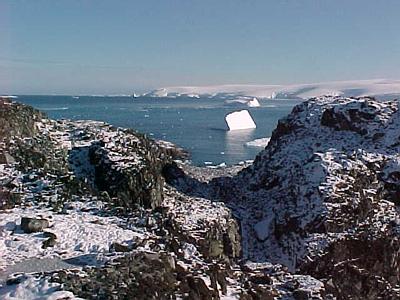
View of Anvers Island and icebergs from the top of the hill on Norsel Point.
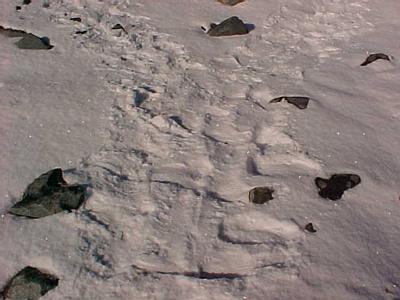
Fur seal track in the snow. Look for the large front flipper marks and the ones made by the smaller rear "feet" which are joined together.
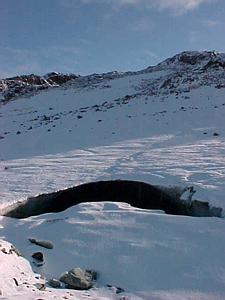
Ice cave exit/entrance.
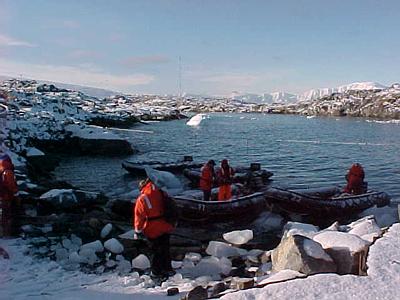
Getting the Zodiacs ready to go.
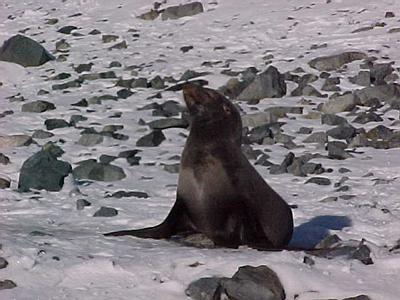
Southern Fur seal sunning itself.
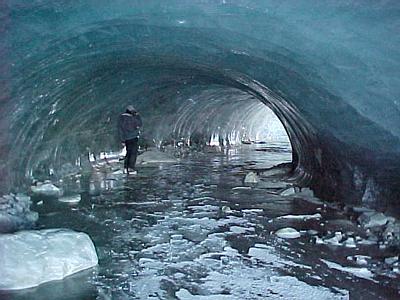
Ice cave.

Contact the TEA in the field at
.
If you cannot connect through your browser, copy the
TEA's e-mail address in the "To:" line of
your favorite e-mail package.
|
